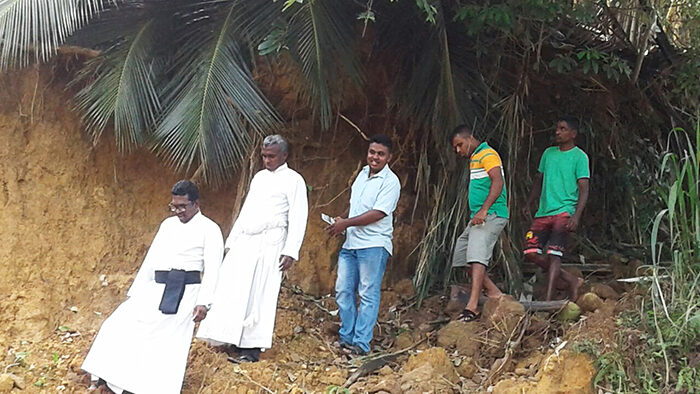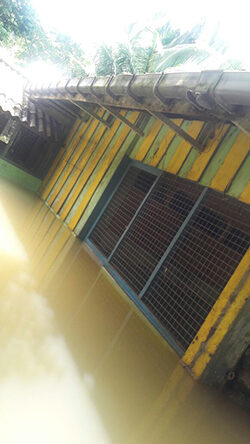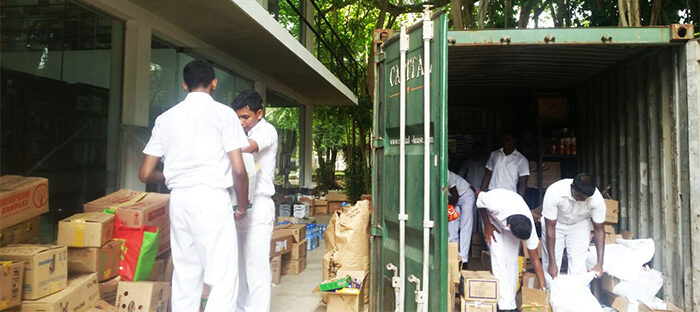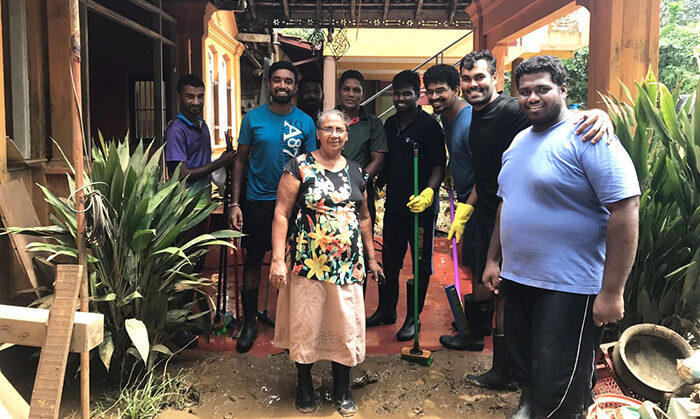ABM Archive Website
THIS WEBSITE CONTAINS ARCHIVE MATERIALS FOR HISTORICAL REFERENCE ONLY
For up-to-date information, including our latest appeals, news, and resources, please visit our current website.
Update: Sri Lanka Flood Appeal
 |
| © Church of Ceylon, Colombo Diocese. |
May 2018
In May 2017, the Anglican Church of Ceylon’s Diocese of Colombo asked ABM for assistance after Cyclone Mora caused the worst flooding in 15 years across Sri Lanka, with more than 500 mm of rainfall in some areas. As a result of flash floods and landslides 212 people died and 78 people remain missing, 14,655 people were displaced and over 603,105 people were affected in other ways. ABM and our supporters responded and contributed to the disaster response coordinated by the Church. In total ABM sent AUD $2,349 to the Diocese of Colombo’s disaster response.
It is significant to note that even in those communities that are accustomed to annual monsoons and flooding, their local emergency response plans were completely overwhelmed by the rains that fell that May. Areas that are usually dry during floods and used as emergency shelters were flooded or washed away. For example, the community at Hangamuwa and Magurugoda villages in Ratnapura District have a well practiced Disaster Management Team with two canoes dedicated for rescues. When the Church reached them they heard that “the water levels rose sharply to an alarming proportion that [we] had not experienced before or expected. Panic set in as the houses of refuge were underwater … This was a total unexpected devastation to a community that used to feel prepared for disaster”.
 |
| Clergy out and about during the floods in Sri Lanka. © Church of Ceylon, Colombo Diocese. |
While many clergy and parishioners were themselves affected, the Church was still able to respond quickly to the immediate needs of communities where they are located. Reports were received of local church leaders and parishioners rescuing people from their homes while churches were turned into emergency shelters for families whose homes had been flooded, washed away or buried in landslides. Complementing this, the Church sent out needs-assessment teams to gather information first-hand about the affected communities and to coordinate the relief efforts.
 |
| Flooding level in Sri Lanka. © Church of Ceylon, Colombo Diocese. |
When a needs assessment team reach the communities at Hangamuwa and Magurugoda villages, they found that while there had been no deaths, “They had lost most of their belongings if not all. They were feeling helpless, confused, disappointed and vulnerable.”
Food, bedding, kitchen utensils and clothes parcels were prepared and distributed according to need. The Churches efforts didn’t end there. Once the waters started receding, the Church assisted with cleaning 55 water sources and 83 homes so the residents could return. 5 medical camps were also held to treat skin and gastrointestinal diseases caused by poor water quality. Food, mosquito nets and clothing were distributed to the most needy. In total, over 1,000 families (or 6,375 individuals), received some kind of assistance from the Church.
A local spokesperson for the Hangamuwa and Magurugoda communities said how she was “extremely appreciative of the assistance since this village was not covered by most other NGO’s, and they had by passed this community. The kitchen utensils and the bedding enabled them to start their resettlement process from the camp to their homes. The slow process of rebuilding is arduous, long drawn and painful but the entire community have resolved to build their lives, they have done it before and they are now prepared to do it again.”
As part of their response efforts, the Church asked the families they assisted for feedback. Overwhelmingly, the responses were positive: the communities appreciate the humility of the assessment teams, and the fact that they visited the people individually in their homes and assessed the need, and that while not everybody received something, the neediest people received support.
For the people in Hangamuwa and Magurugoda villages, the combination of assessment teams visiting and providing relief efforts meant that “they found hope. And hope was built on relationship, trust, meeting their need and understanding their story, whilst people who were treated with dignity and love responded with a positive outlook in a time of despair.” While the material relief matters, so does the way those receiving the relief are treated.
All this was possible because the Church had previously undertaken disaster management training. As the Church of Ceylon Colombo Diocese explained, “Our training and experience on Disaster Management was very useful in getting relief to the places it was required in a speedy and efficient manner.” This is why ABM supports our partners in disaster prone areas to undertake such disaster risk reduction training and planning, so that they can work with communities to reduce the loss of life and destruction of livelihoods when disaster does happen.
ABM wishes to thank all those who generously supported this emergency appeal and our disaster risk reduction programs with our other partners.
 |
| Distributing relief supplies. © Church of Ceylon, Colombo Diocese. |
 |
| Cleaning up after the floods. © Church of Ceylon, Colombo Diocese. |
< Back


